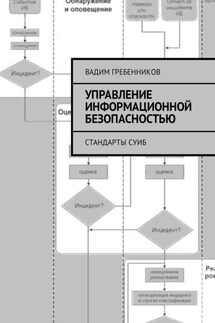IT Cloud - страница 40
esschtolts @ cloudshell: ~ (essch) $ cd bitrix /
esschtolts @ cloudshell: ~ / bitrix (essch) $ kubectl create -f deploymnet.yaml -f loadbalancer.yaml
deployment.apps "Nginxlamp" created
service "frontend" created
esschtolts @ cloudshell: ~ / bitrix (essch) $ kubectl delete -f deploymnet.yaml -f loadbalancer.yaml –namespace = default
deployment.apps "Nginxlamp" deleted
service "frontend" deleted
esschtolts @ cloudshell: ~ / bitrix (essch) $ kubectl get pods
NAMEREADY STATUS RESTARTS AGE
Nginxlamp-b5dcb7546-8sl2f 1/1 Running 0 1m
Now let's look at the external IP address and open the page:
esschtolts @ cloudshell: ~ / bitrix (essch) $ curl $ (kubectl get -f loadbalancer.yaml -o json
| jq -r .status.loadBalancer.ingress [0] .ip) 2> / dev / null | grep '
'
Welcome to github.com/mattrayner/docker-lamp "target =" _blank "> Docker-Lamp aka mattrayner / lamp
Customization
Now we need to change the standard solution to our needs, namely, add configs and our application. For simplicity's sake, we'll mark (change the default) .htaccess file at the root of our application , making it simple to place our application in the / app folder . The first thing that begs to be done is to create a POD and then copy our application from the host to the container (I took Bitrix):
While this solution works, it has a number of significant disadvantages. The first thing is that we need to wait from outside by constantly polling the POD when it will raise the container and we will copy the application into it and should not do this if the container has not been raised, as well as handle the situation when it breaks our POD, external services, can rely on the status of the POD, although the POD itself will not be ready yet until the script is executed. The second drawback is that we have some kind of external script that needs to be logically not separated from the POD, but at the same time it needs to be manually launched from outside, where it is stored and somewhere there should be instructions for its use. And finally, we can have a lot of these PODs. At first glance, the logical solution is to put the code in the Dockerfile:
esschtolts @ cloudshell: ~ / bitrix (essch) $ cat Dockerfile
FROM mattrayner / lamp: latest-1604-php5
MAINTAINER ESSch ESSchtolts@yandex.ru>
RUN cd / app / && (\
wget https://www.1c-bitrix.ru/download/small_business_encode.tar.gz \
&& tar -xf small_business_encode.tar.gz \
&& sed -i '5i php_value short_open_tag 1' .htaccess \
&& chmod -R 0777. \
&& sed -i 's / # php_value display_errors 1 / php_value display_errors 1 /' .htaccess \
&& sed -i '5i php_value opcache.revalidate_freq 0' .htaccess \
&& sed -i 's / # php_flag default_charset UTF-8 / php_flag default_charset UTF-8 /' .htaccess \
) && cd ..;
EXPOSE 80 3306
CMD ["/run.sh"]
esschtolts @ cloudshell: ~ / bitrix (essch) $ docker build -t essch / app: 0.12. | grep Successfully
Successfully built f76e656dac53
Successfully tagged essch / app: 0.12
esschtolts @ cloudshell: ~ / bitrix (essch) $ docker image push essch / app | grep digest
0.12: digest: sha256: 75c92396afacefdd5a3fb2024634a4c06e584e2a1674a866fa72f8430b19ff69 size: 11309
esschtolts @ cloudshell: ~ / bitrix (essch) $ cat deploymnet.yaml
apiVersion: apps / v1
kind: Deployment
metadata:
name: Nginxlamp
namespace: development
spec:
selector:
matchLabels:
app: lamp
replicas: 1








